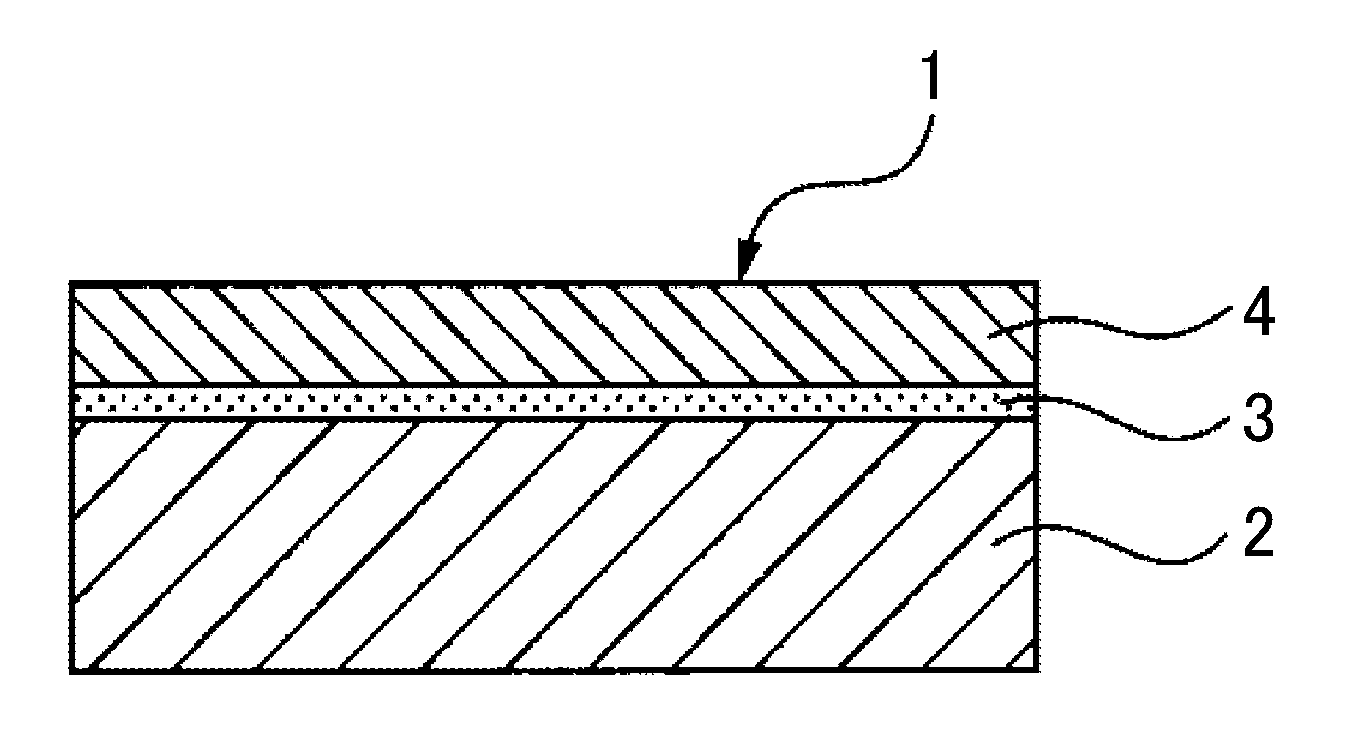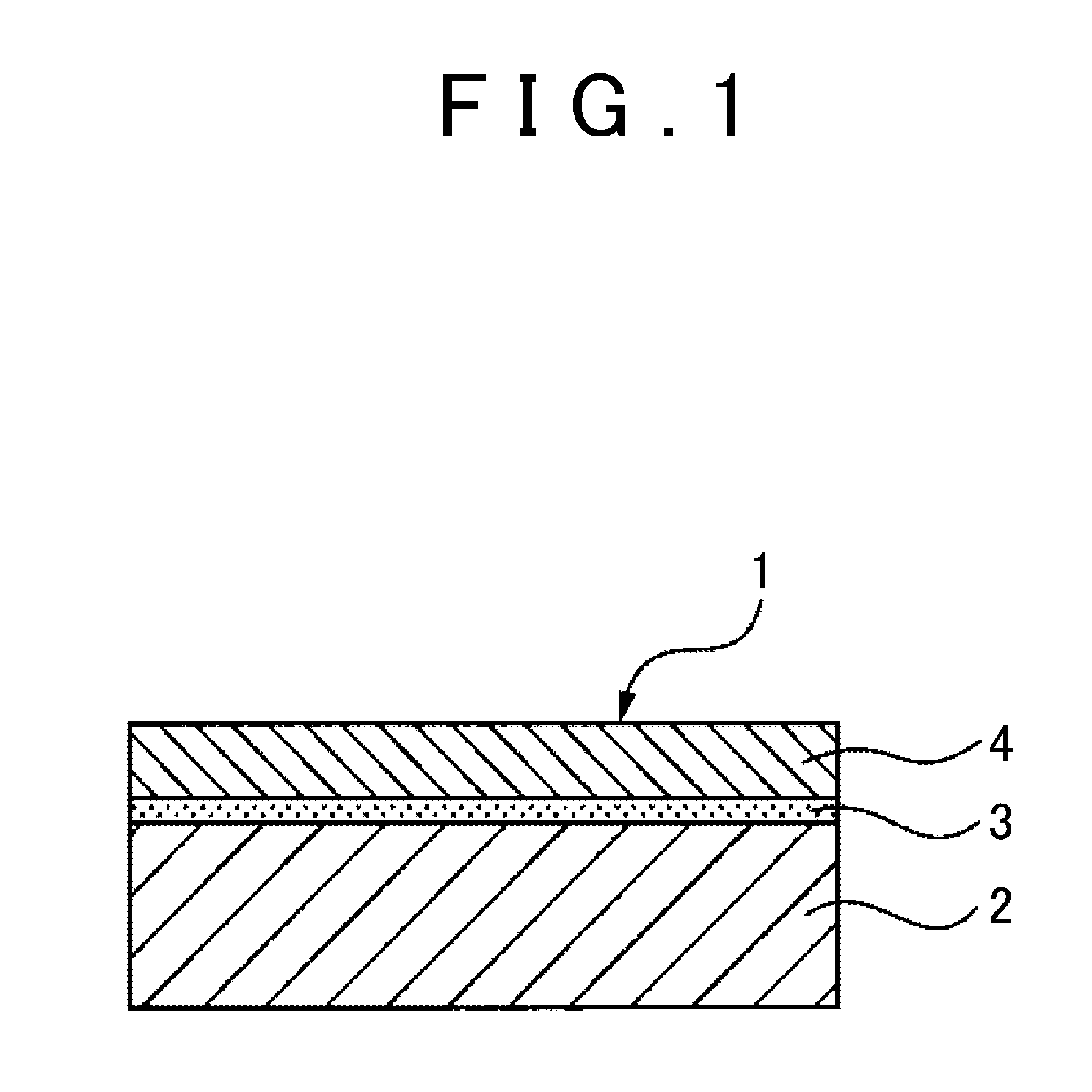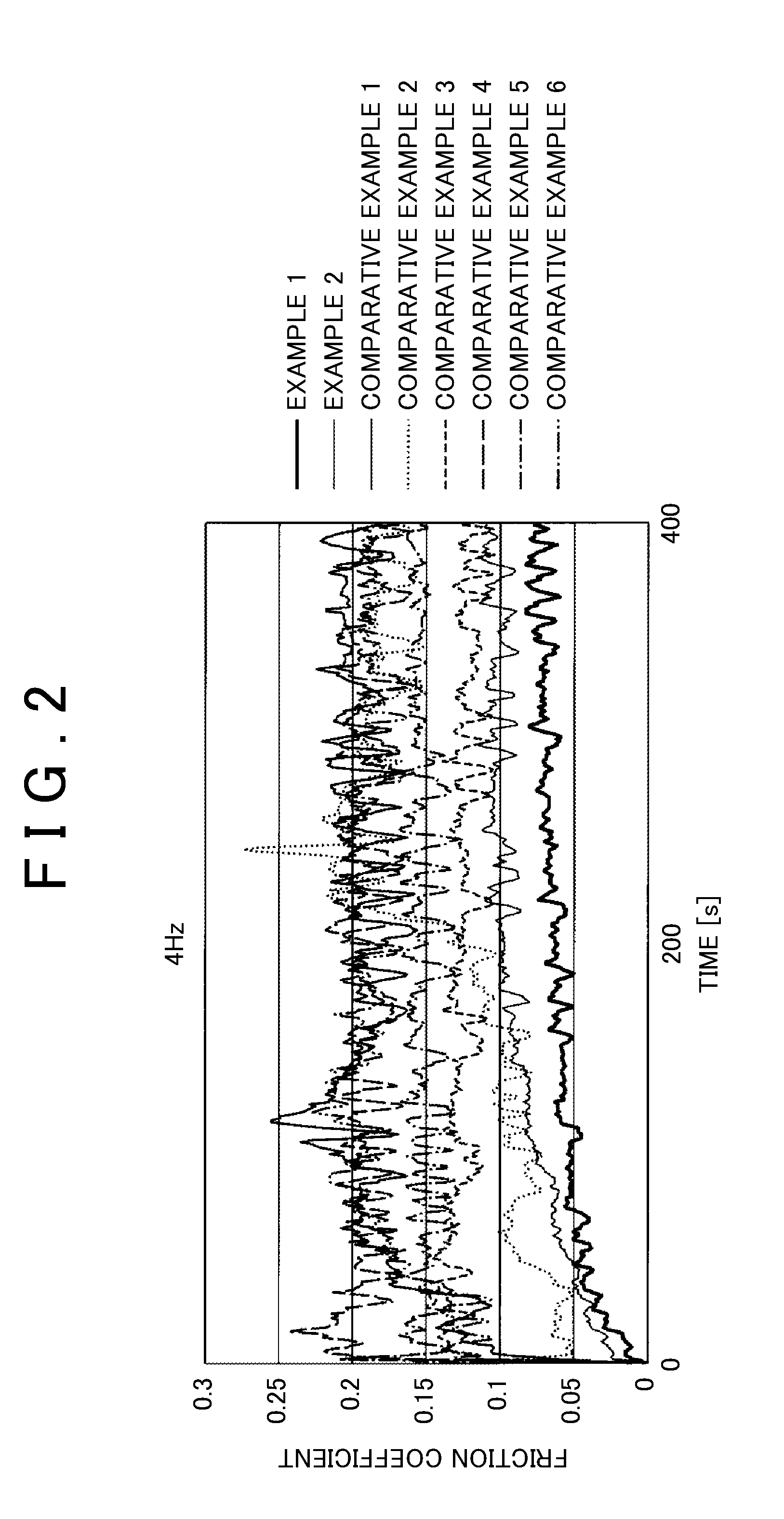Sliding member and method of manufacturing the same
- Summary
- Abstract
- Description
- Claims
- Application Information
AI Technical Summary
Benefits of technology
Problems solved by technology
Method used
Image
Examples
reference examples 1 and 2
[0082]100 parts by mass of JER828 (liquid, bifunctional bisphenol A type epoxy resin, manufactured by Mitsubishi Chemical Corporation) as an epoxy resin; 1 part by mass (Reference Example 1) or 5 parts by mass (Reference Example 2) of BYK-Silclean 3720 (solid content: 25 mass %; manufactured by BYK-Chemie Japan K.K.) as a silicon leveling agent; and 3 parts by mass of CPI-210S (photoacid generator; 100 parts by mass of non-volatile components; manufactured by San-Apro Ltd.) as a polymerization initiator were mixed with each other to prepare a mixed solution. This mixed solution was set as a hard coating solution (curing composition).
example 1
[0084]RAYMAGIC 07 (manufactured by Kanae Paint Co., Ltd.) was cast onto a single surface of an aluminum plate (mirror surface) using a wire bar (No. 3). Next, the aluminum plate was left to stand in an oven at 100° C. for 1 minute and then was irradiated with UV rays under irradiation conditions: 400 mJ / cm2. As a result, an undercoat primer layer having a thickness of about 2 μm was formed. Next, the hard coating solution of Reference Example 1 was cast onto the primer layer side using a wire bar (No. 30). Next, the aluminum plate was left to stand in an oven at 100° C. for 1 minute, was irradiated with UV rays under irradiation conditions: 400 mJ / cm2, and was heated at 150° C. for 1 hour. As a result, a coating film of the hard coating solution was cured, and an aluminum substrate including an undercoat primer layer having a thickness of about 2 μm and a hard coating layer (resin layer) having a thickness of 40 μm was prepared. Regarding the obtained sample, the measurement of the ...
example 2
[0085]An aluminum plate including an undercoat primer layer having a thickness of about 2 μm and a hard coating layer having a thickness of 40 μm was prepared using the same method as in Example 1, except that the hard coating solution of Reference Example 2 was cast instead of the hard coating solution of Reference Example 1. Regarding the obtained sample, the measurement of the surface roughness and the friction test were performed. The friction coefficients were 0.1 (rank B) at 4 Hz, 0.09 (rank A) at 16 Hz, and 0.08 (rank A) at 20 Hz. FIGS. 2 to 4 show the results of measuring a friction coefficient together with other results. The table of FIG. 5 shows the results of evaluating peeling resistance after the friction test together with other results. The table of FIG. 13 shows the results of measuring the surface roughness of the sample before the friction test together with other results. FIG. 15 shows a copy of a surface image of the sample after the friction test.
PUM
| Property | Measurement | Unit |
|---|---|---|
| Fraction | aaaaa | aaaaa |
| Thickness | aaaaa | aaaaa |
| Thickness | aaaaa | aaaaa |
Abstract
Description
Claims
Application Information
 Login to View More
Login to View More - R&D
- Intellectual Property
- Life Sciences
- Materials
- Tech Scout
- Unparalleled Data Quality
- Higher Quality Content
- 60% Fewer Hallucinations
Browse by: Latest US Patents, China's latest patents, Technical Efficacy Thesaurus, Application Domain, Technology Topic, Popular Technical Reports.
© 2025 PatSnap. All rights reserved.Legal|Privacy policy|Modern Slavery Act Transparency Statement|Sitemap|About US| Contact US: help@patsnap.com



